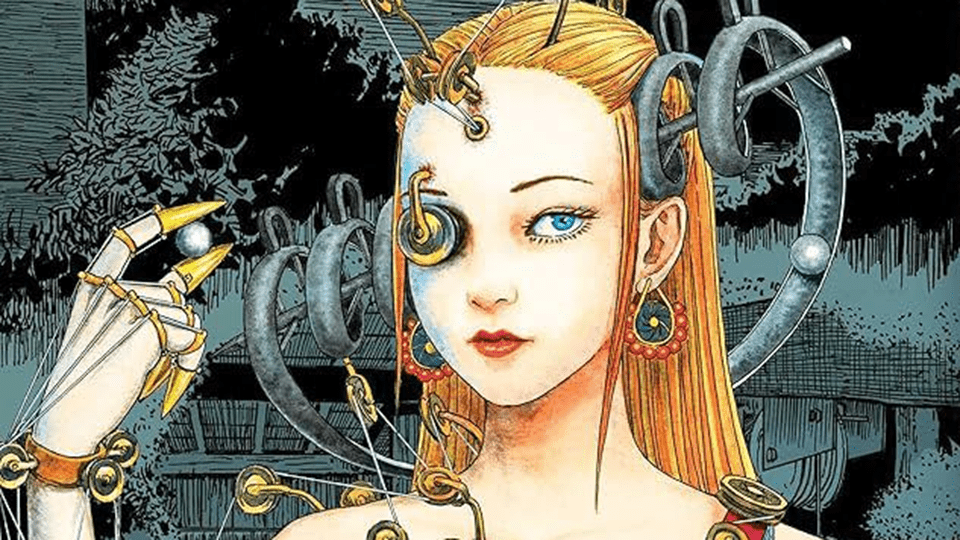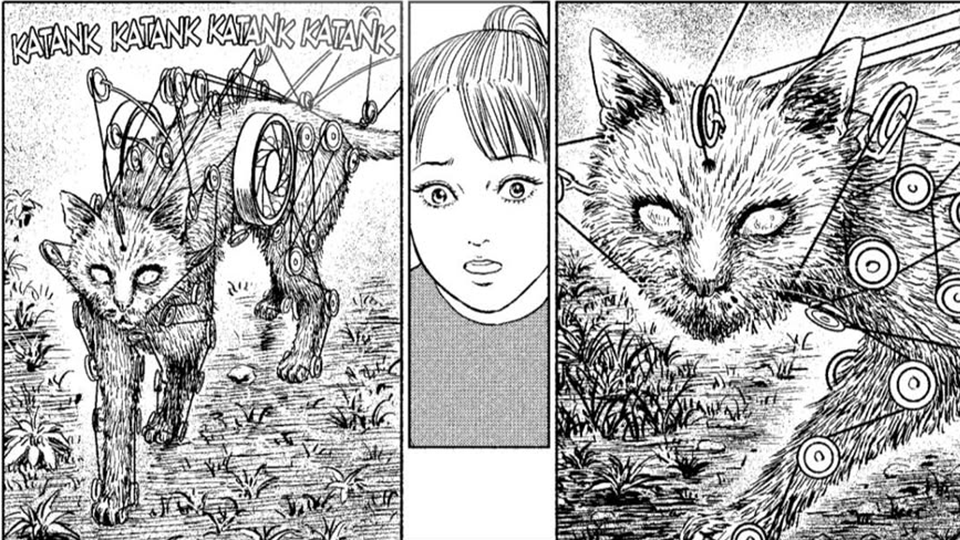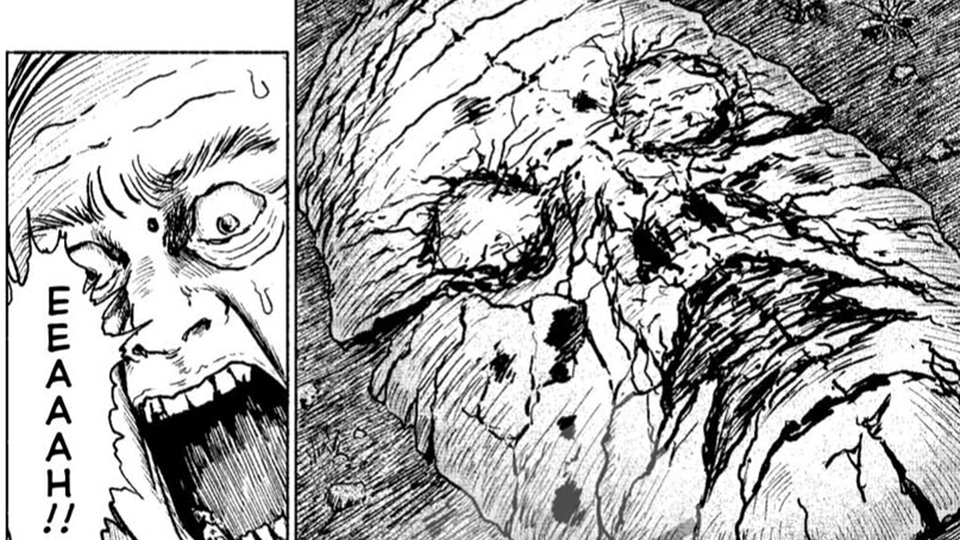
Junji Ito is back with another volume of The Liminal Zone! Newly translated into English, this collection offers four new stories from the horror manga master. One revisits The Strange Hikizuri Siblings: a new series cut down after just two chapters. While the new installment is (as always) a heck of a read, we’re here to dive into the trio of new standalone stories in this volume.
From dust to turtles to perpetual motion machines, Ito is here to make all sorts of things terrifying. But which will become mainstays in his catalogue? Read on to find out!
Demon King of Dust

Junji Ito has a way of finding the horror in commonplace things, from shower drains to snails. Demon King of Dust is his latest crack at bringing horror to the mundane. Yuichi, our young protagonist, comes from a line of celebrated actors. His father, who hasn’t had a role in years, owns a lonely, dusty inn. It’s just Yuichi, his dad, and two housekeepers living there. Oh, and dust. Lots of dust that just won’t go away. It seems to be coming from the closed-off top floor, but Yuichi’s father refuses to acknowledge this.
As the story progresses, Yuichi discovers a bumper crop of skeletons in the family closet. Or, rather, in its attic. Not only that, but his father’s fear of a “demon king of dust” seems to have some grounding in reality. The reminder that dust is largely human skin cells feeds into the big reveal for this story: an eerie, hard-hitting one that leaves off on a terrifying cliffhanger.
Village of Ether

We all learned about simple machines in school, right? And we’ve all at least heard of perpetual motion machines: impossible devices that, once they start running, will continue to run under their own power. But in Junji Ito’s Village of Ether, the impossible becomes possible when a group of college students enters a seemingly deserted village. One scientist remains, carrying out his late father’s dream of creating true perpetual motion machines. And it seems he’s succeeded—the caveat being that these machines only continue running within the village.
Body horror meets a portal straight to Hell as the story continues, unveiling the truth behind these machines. Fans of Ito’s gorier works will love this one, as machines fuse with flesh to create horrifying new creations. The feral cat prowling the village (seen above) is just a taste of what this mad scientist has been up to. This is our personal favorite out of the three stand-alone stories. Its bizarre designs, paired with its surprisingly sentimental ending, make this a must-read.
The Shells of Manjunuma

In the back of this volume, Junji Ito discusses his inspiration for each story. The Shells of Manjunuma came about after he picked up a turtle in the road one day. It went “Ngeh” and urinated on him, and this story was born. (Yes, that is indeed what he cites as his entire inspiration.) But that strange encounter is, at least in the story, the beginning of a curse. These strange-sounding turtles bear markings akin to human faces on their underbellies. Moreover, local birds eat the turtles, dropping empty shells that look disturbingly like locals. Soon after, those locals die.
One day, Kunikazu finds a turtle whose underbelly bears a face like his absent mother’s. And from there, terrifying karma appears to visit his home—specifically, Kunikazu’s father. But how much of the legend is manufactured, and how much is the universe taking revenge? While this is the weakest of Ito’s new stories, a weak Ito story is still very strong. The eerie faces on the turtle shells are, on their own, enough to make this a creepy read.
